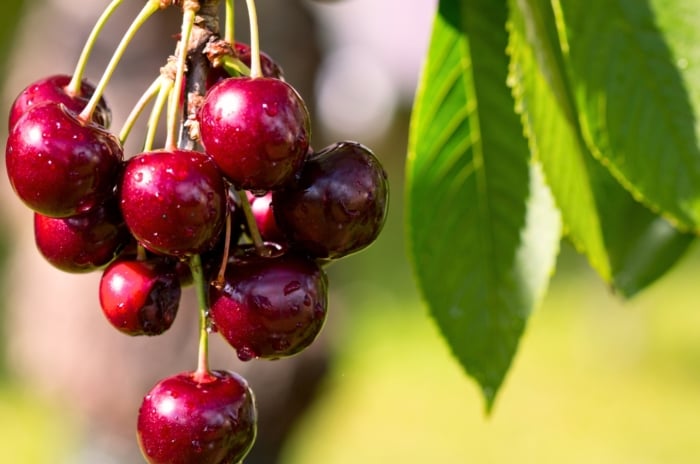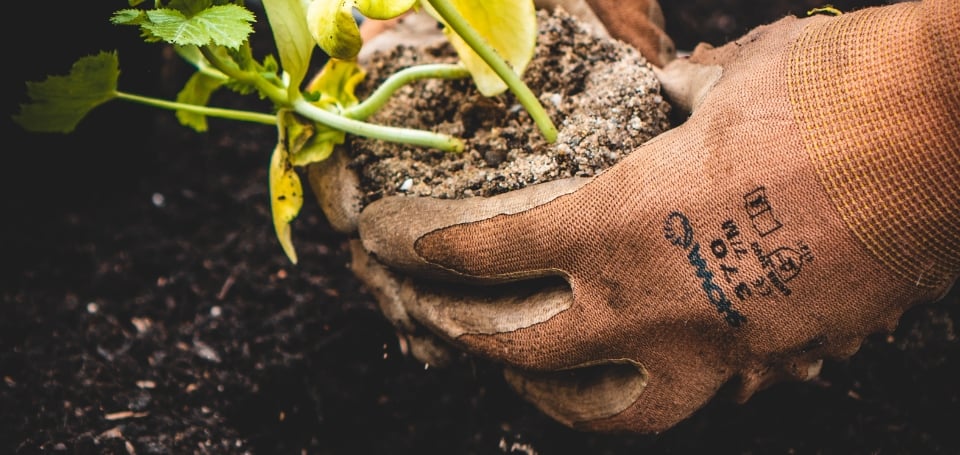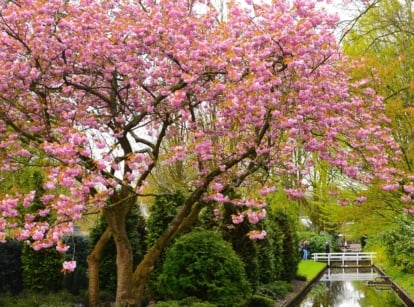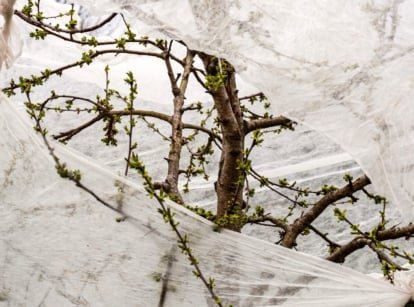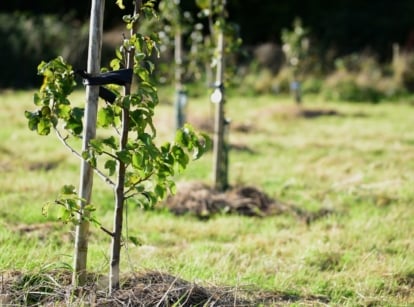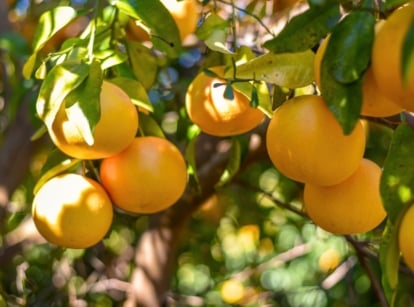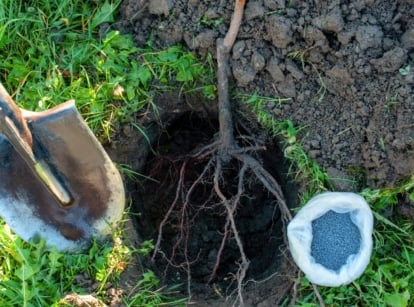How to Plant, Grow, and Care for ‘Rainier’ Cherry Trees
Are you looking for a tree that produces intense flowers and delicious fruit? Look no further than productive and easy-to-grow ‘Rainier’ cherry trees. In this article, plant expert Matt Dursum covers how to plant, grow, and care for these wonderful cherries.

Contents
It’s hard to beat cherry trees for your edible landscape. They’re easy to grow and thrive in a variety of climates. Plus, they put on a show of soft blooms in the spring.
‘Rainer’ varieties produce tons of golden-red fruits and big, beautiful blooms. Their fruit is juicy, sweet, and perfect for eating raw, right off the tree.
If you live in a colder climate, these cherry trees will thrive. Let’s dive into how to grow and maintain these highly productive and stunning stone fruits.
‘Rainier’ Cherry Tree Overview
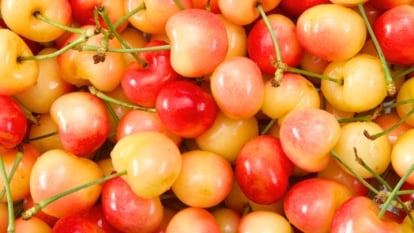
|
Plant Type
Stone fruit
Family
Rosaceae
Genus
Prunus
Species
Prunus avium ‘Rainier’
|
Native Area
Europe and Asia
Exposure
Full sun
Height
Up to 30’
Watering Requirements
Moderate
|
Pests & Diseases
Beetles, aphids, leaf miners, caterpillars, brown rot, black knot, blossom wilt
Maintenance
Low
Soil Type
Loamy
Hardiness Zone
5-9
|
What Is It?

The US produces two types of cherries: sour and sweet. While sour cherries are great in canning, pies, sauces, and infusions, sweet cherries are delicious when eaten fresh. There are around 900 varieties of sweet cherries on the market, including our beloved ‘Rainiers.’
‘Rainier’ cherries are varieties bred for their sweet, golden to soft red fruit. They have a mild, very cherry-like flavor that’s juicy and nutritious. They are vigorous fruit producers and stay relatively short in stature, which makes them easy to harvest!
Besides their fruit, they explode in gorgeous blossoms in the spring. The white flowers put on a light, floral scent that’s hard not to adore. Plant them in entryways, landscapes, or home orchards, and you’ll quickly fall in love with them.
Characteristics

These small cherry trees grow up to 30 feet tall and produce dense clusters of beautiful white flowers in the mid-spring. They mature and bear fruit in around 4 to 5 years after planting.
When they fruit, they form dense clusters of cherries that are easy to harvest. As they grow, they form an easy-to-maintain pyramidal shape.
Besides their flowers and delicious stone fruits, they’re fantastic at attracting pollinators. Birds also love them as food sources and nesting grounds. They make great additions to a pollinator-friendly garden outside their invasive range.
Native Area

Cherry trees are native to Europe and Asia, where they’ve been cultivated for centuries. There are hundreds of species in the Prunus genus. Many, like Japanese Sakura, are grown for their ornamental blooms.
Botanist Harold Fogle bred ‘Rainier’ cherries for the first time in 1952 at Washington State University. Fogle crossbred ‘Bing’ varieties and ‘Van’ varieties to get a new variety of Bings that would last for longer in the season.
‘Rainiers’ arrived in nurseries in 1960 and continued to accompany ‘Bing’ cherries in orchards. People propagated them as pollinators for the more common ‘Bing’ varieties. In the 1980s, that all began to change when growers and customers realized ‘Rainiers’ had such amazing fruit.
The parent species of this tree, Prunus avium is invasive to areas of North America. Make a note of these areas before planting, as sweet cherries escape cultivation in these regions, crowding out native species.
Planting

Plant these wonderful cherry trees in the spring, just before they break out of dormancy. They’ll thrive in well-drained soil in an area that’s elevated for better drainage. Make sure the area gets full sun.
If you’re growing a transplant or bare root sapling, moisten the root ball before planting. Dig a large hole, about twice the size of the root ball, and gently place your young tree inside. The area where the roots connect to the trunk should be barely visible. If you’re planting a grafted tree, ensure the graft is above the soil line.
Add loamy soil around the newly planted tree, covering the roots. Give your transplant a good amount of water so the soil stays moist. Try adding a layer of moss or mulch around the base of your tree.
‘Rainier’ cherries are not self-fertile. Therefore, plant yours with another cherry variety for cross-pollination. ‘Bing’ or ‘Stella’ varieties are recommended companions.
Growing From Seed

It’s much easier to grow your ‘Rainier’ cherry tree from starters. However, if you want a fun garden project and have tons of seeds after gorging, then go ahead and give it a try.
Start by collecting fresh cherry seeds and cleaning them well. Then, keep your seeds in the refrigerator for several months. This will help cold stratify your seeds before planting, which is a very important step for many stone fruits like cherries.
Next, remove your seeds from the fridge in early spring. Let them warm to room temperature and plant them about an inch deep in well-drained loamy soil. Try planting 2 or 3 seeds per container and water them well. Place the container in an area with full sun, and watch them grow.
How to Grow
‘Rainier’ cherries are very easy to grow. All you need is cool weather, full sun, and well-drained soil. You also need a companion to produce delicious cherries.
They keep their attractive pyramid-like shape throughout their lives. All you’ll have to do is monitor their watering and check for pests and diseases.
These varieties need cross-pollination to produce fruit. Always plant them near other varieties of cherries and encourage pollinators in your garden.
Light

Plant these cherry varieties in an area with bright, direct sun. Aim for an area with over 6 hours. Without full sun, they won’t grow to their potential and probably won’t produce an abundant crop of cherries.
If you plant them in full shade, you won’t get flowers or fruit. Plant them away from tall trees or buildings. They love open spaces where they can absorb the full blast of the sun’s rays.
Water

These fruit trees love a good soaking, especially when they’re young. For their first few years, water them twice a week. Make sure the soil completely drains before watering again.
After about 3 or 4 years, their roots will grow deep enough to extract groundwater. After this period, cut back on watering during periods of drought or long stretches of sunny weather in the summer.
Be careful not to over or under-water your trees. They could be prone to diseases with too much or too little rain.
Soil

‘Rainier’ cherry trees love rich, well-drained, loamy soil. It helps to amend it with compost before planting.
Add a layer of mulch or moss around the bases of your trees. This will help lock in soil moisture and encourage a healthy biome around the roots.
Temperature and Humidity

These varieties of cherries thrive in cooler regions, between hardiness zones 5 through 9. They don’t respond well in areas with excessive heat or long, cold winters.
Mulch will help protect them from extreme temperature swings. Grow them away from strong winds or areas with high heat and humidity.
If you live near a lake or ocean that moderates the temperature, even better. These trees grow exceptionally well near the coast.
Fertilizing

Wait until your saplings are over 2 years old before fertilizing. Afterward, add a nitrogen-rich fertilizer around the base of your trees in the early spring.
Choose a slow-release organic fertilizer like this one. Water the base of your plants well after applying the plant food.
Maintenance

Your cherry trees will need good pruning as they grow. Start by disinfecting your pruners to prevent the transmission of diseases. Then remove any sucker branches at the base of the trunks.
In late winter, start by trimming roughly a third off your tallest, leggiest branches. Always cut at a 45° angle. This will encourage your tree to grow wider at the base.
After the first few years of growth, isolate your strongest lateral branches. Look for highly productive and strong branches that grow out from the trunk. Prune any branch between them to about half its length.
As your trees grow, you’ll repeat this every year at 2-foot intervals. This will give you an evenly spaced series of lateral branches. This will improve aeration between the branches and give you plenty of space to harvest.
Propagation

Try propagating by using fresh spring cuttings. Look for green and bendable branches that are both flexible and strong. Take a cutting roughly a foot long.
Remove the leaves toward the ends of the cuttings and leave 2 or 3 leaves toward the ends. Roll their ends in rooting hormone and place them in well-drained soil amended with compost. Cover them with a plastic bag and mist them every day as they grow.
In one month, you should start to see new growth. Wait until you feel a slight tug when you pull on your cuttings. This means their root balls have developed and they’re ready for transplanting into larger containers like these.
Harvesting and Storage

After they bloom, small clusters of cherries will develop on the healthiest branches. Wait several weeks until they develop red hues and golden skin. Leave them longer on the tree to become sweeter, or harvest them early for more tartness.
The best way to tell if they’re ripe is by sampling them. Grab a cherry from the tree and take a bite. If has a balance of sweetness and tartness, it’s good to harvest.
When harvesting, always leave the stems alone and select the fruit. Avoid damaging any branches, or they may not produce fruit the following year.
After harvesting, store your cherries in the freezer for long-term use. Alternatively, you can eat them fresh and keep them in the refrigerator for a couple of weeks.
Common Problems
Besides problems with temperature swings, you’ll have to monitor your ‘Rainier’ cherry trees for diseases. However, if you prune them well and maintain a healthy watering schedule, they should be strong and disease-free.
Pests

The most common pests that affect cherry trees are cherry aphids. Species such as the black cherry aphid can damage your trees by sucking their sap. You’ll notice curly leaves that lose their vigor and sometimes appear off-color.
Insects such as black-winged borer larvae can also be devastating. These larvae bore into the woody parts of your cherry trees. If left untreated, they’ll severely damage your trees.
Leaf miners and other caterpillars may visit your tree and dine on the leaves and fruit. Harvest quickly to prevent these and birds from gobbling them up. Prune away areas infested by leaf miners, indicted by winding paths through leaves.
As long as you follow good garden housekeeping, your trees should be fine. However, if you have an infestation, it’s best to isolate the trees. Then, treat them with pyrethrum-based bark spray or a neem oil solution.
Diseases

Besides pests, several diseases could harm your trees and crops. Watch out for the common cherry leaf spot. This fungus attacks cherry trees during humid days and in warm climates. Look for dark black or brown spots on the leaves. Eventually, your tree will drop its leaves early and not produce fruit.
Watch out for the common powdery mildew fungus. You’ll see white or gray sections of mold develop on leaves, branches, and even fruit. This mildew occurs when you give your trees too much water or they don’t have good enough air circulation.
If you notice brown or brownish-gray powdery areas on your trees, it’s a sign of brown rot, also known as blossom wilt. This harmful disease affects unhealthy trees and targets twigs, blossoms, and fruit.
Besides treating with organic fungicides, the best way to prevent these harmful diseases is by keeping your trees healthy. Grow them in areas with full sun and well-drained soil. Keep up with their pruning to improve aeration. Healthy trees will seldom have problems.
Frequently Asked Questions
Does a Rainier cherry tree need a pollinator?
Yes, these varieties are not self-fertile and will need another cherry variety nearby. Encourage pollinators like bees and hummingbirds in your garden and plant at least one other variety of cherry nearby.
Are Rainier cherry trees easy to grow?
Yes, these trees are considered by many gardeners as easy. However, it’s important to keep up with their maintenance. If you leave them uncared for, they could succumb to diseases or pests.
What pollinates Rainier cherry trees?
Because they’re not self-fertile, they’ll need other cherry varieties such as Bings or Black Tartarians nearby. Bees, hummingbirds, and other pollinators will do the job.
How tall are Rainier cherry trees?
These varieties are on the shorter end for cherries. They can reach just up to 30 feet. Some healthy trees may get larger, but they generally stay short and stout.


